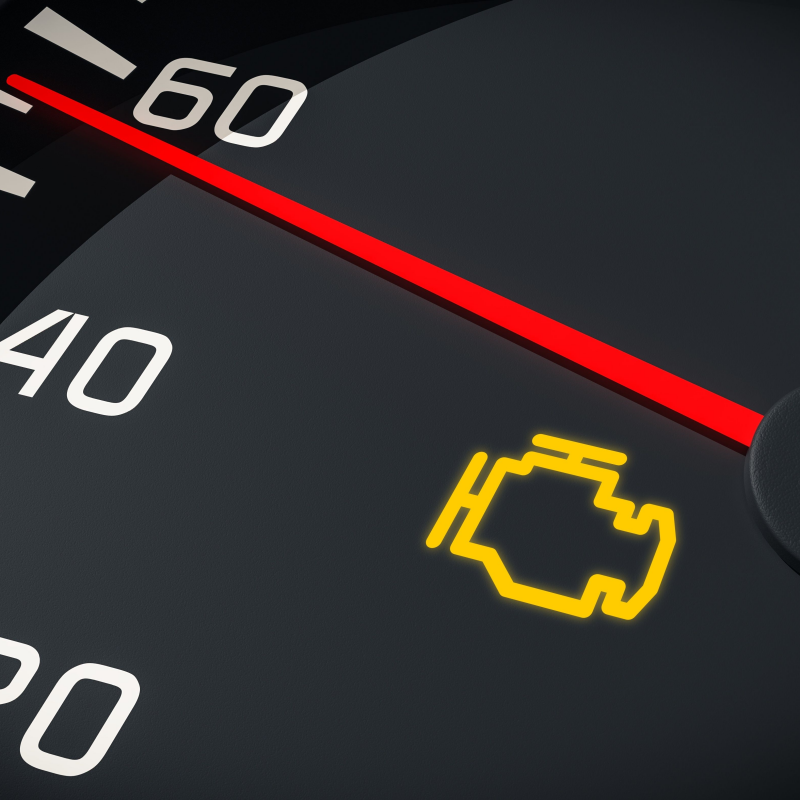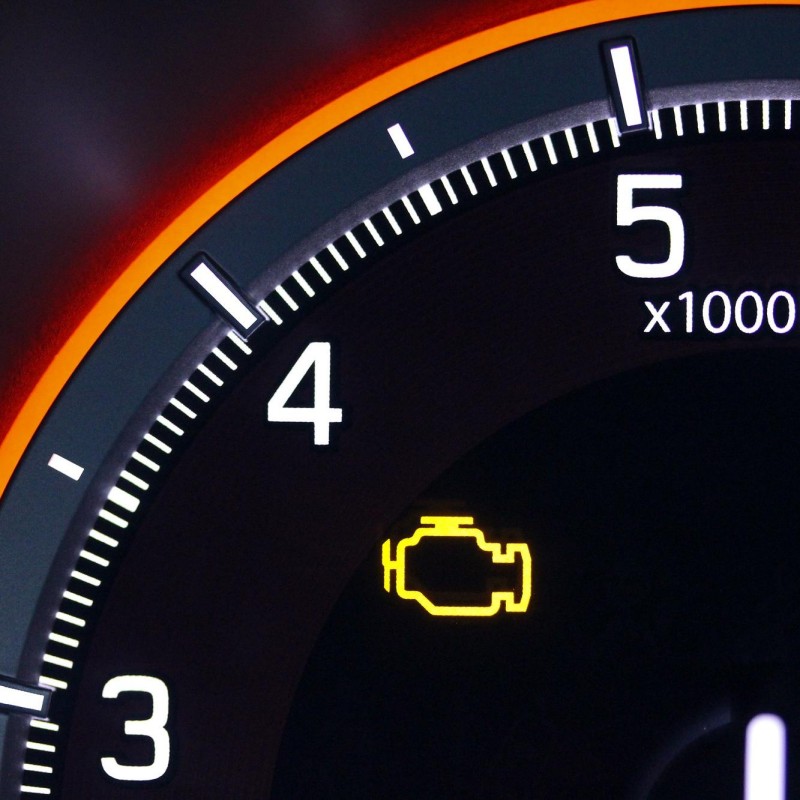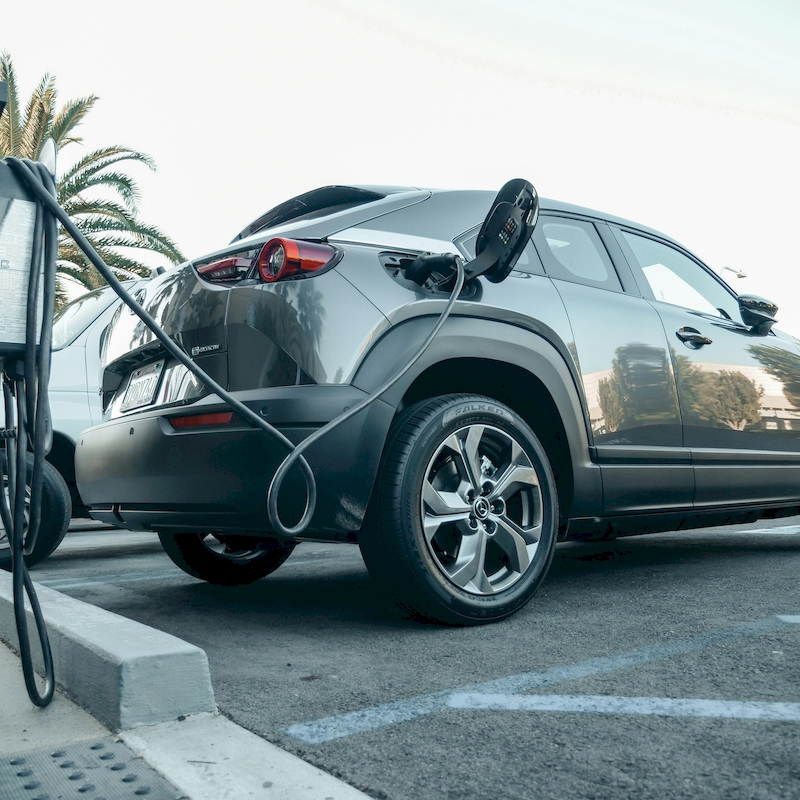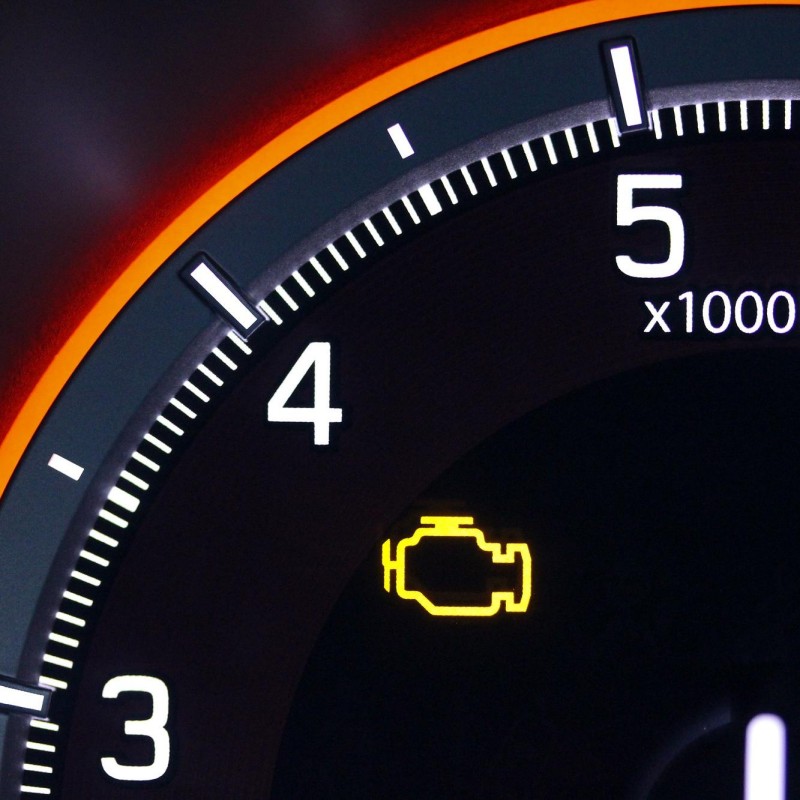Seeing a solid check engine light illuminate on your dashboard can evoke feelings of concern and confusion among drivers. This warning signal is one of the most critical notifications your vehicle can display, yet its meaning can vary widely depending on the situation. The check engine light is part of your car’s onboard diagnostic system, which monitors the performance of various engine components and emissions systems. Understanding what a solid check engine light means is essential for every vehicle owner. Ignoring this signal could lead to more severe issues, including diminished performance and costly repairs. This comprehensive guide aims to clarify the meaning behind a solid check engine light, explore common causes and their implications, and offer practical steps you can take to address the issue effectively.

The Basics of the Check Engine Light
To comprehend what a solid check engine light signifies, it’s essential to know the fundamentals of how the vehicle’s onboard diagnostic (OBD) system works. This system is equipped with sensors throughout the engine and exhaust systems designed to keep track of their performance.
The Role of the Onboard Diagnostic System
The OBD system is designed to detect issues within the engine and emissions systems. When a problem is identified, the OBD system generates a trouble code and triggers the check engine light. The light can display in two different forms: solid or flashing.
- Solid Check Engine Light: A solid light generally indicates a non-critical issue that should be addressed but does not typically require immediate action. While it warrants further investigation, it may not lead to immediate vehicle breakdown.
- Flashing Check Engine Light: This indicates a severe problem, often related to the engine misfiring or potential damage to the catalytic converter. A flashing light generally requires immediate attention as it can significantly affect performance and fuel efficiency.
Importance of Understanding the Light
Understanding the implications of a solid check engine light is crucial for vehicle owners. This light serves as an early warning system, allowing you to address potential issues before they escalate into more significant problems.
By taking it seriously and investigating the cause of the light, drivers can save themselves from expensive repairs and ensure their vehicle operates smoothly.
Common Causes of a Solid Check Engine Light
Several specific issues might trigger a solid check engine light, indicating that something needs attention. Below are some common causes worth considering:
Faulty Oxygen Sensor
The oxygen sensor monitors the amount of unburned oxygen in the exhaust gases. If this sensor malfunctions, it could lead to poor fuel economy and increased emissions, prompting the check engine light to activate.
Implications: Ignoring a faulty oxygen sensor may lead to more significant problems, including damage to the catalytic converter and reduced engine performance.
Loose or Damaged Gas Cap
One of the simplest explanations for a solid check engine light is a loose or damaged gas cap. If the cap is not sealed correctly, fuel vapors can escape, impacting the evaporation system of the vehicle.
Implications: A loose gas cap typically does not pose a serious threat but should be addressed to prevent reduced fuel efficiency and unnecessary emissions.
Engine Misfire
An engine misfire occurs when the combustion process fails to complete in one or more cylinders. This malfunction can result from faulty spark plugs, ignition coils, or fuel injectors, causing the solid check engine light to appear.
Implications: Continued operation with misfiring issues can lead to decreased performance, poor fuel economy, and severe engine damage over time.
Faulty Mass Airflow Sensor
The mass airflow sensor measures the amount of air entering the engine to help maintain the proper air-fuel mixture. A malfunction in this sensor can lead to improper combustion and trigger the check engine light.
Implications: A faulty mass airflow sensor could lead to stalling, uneven acceleration, and reduced fuel efficiency.
Exhaust System Issues
Problems with the exhaust system, such as a failed catalytic converter or exhaust leak, can also activate the solid check engine light. These issues may impact vehicle performance and emissions.
Implications: Ignoring issues with the exhaust system can lead to poor performance and increased emissions, as well as potential damage to emission control components.
Transmission Problems
In some cases, a solid check engine light may indicate issues related to the transmission or its sensors. These issues can affect vehicle performance significantly.
Implications: Delaying repairs related to the transmission may lead to more severe costs and disruptions, as it can cause drastic drops in vehicle performance.
Diagnosing the Solid Check Engine Light
If you are faced with a solid check engine light, the first step is to diagnose the problem accurately. Here are effective methods to assist you in this process:
Using an OBD-II Scanner
The most efficient way to diagnose the issue triggering the check engine light is by using an OBD-II scanner. This tool connects to your vehicle’s diagnostic port, providing real-time information about trouble codes that can help pinpoint the problem.
- Accessing Trouble Codes: Upon connecting the scanner, it will retrieve trouble codes stored in the vehicle’s computer. Researching these codes will inform you about the specific issues your vehicle is experiencing.
- Clearing Codes: In some instances, you may clear the codes and observe if the solid check engine light reappears. However, this does not resolve the underlying issue, and further diagnostics are recommended.
Consulting the Vehicle’s Manual
Consulting your vehicle’s owner’s manual can be helpful since it often includes information on the check engine light along with potential causes and recommendations for troubleshooting.
- Manufacturer Guidelines: Follow any manufacturer-specific guidelines for dealing with the check engine light. Be aware that certain warning lights may have varied meanings based on your vehicle’s make and model.
Seeking Professional Diagnostics
If diagnosing the issue on your own feels overwhelming or if you cannot resolve the problem, seeking professional help is wise. A qualified mechanic is equipped with advanced diagnostic tools and expertise to identify the root cause accurately.
- Comprehensive Inspection: A thorough inspection can assess not only why the check engine light is lit but also the overall health of your vehicle. This proactive approach can help prevent future issues.
- Understand Repair Costs: Many shops provide estimates on repairs after diagnostics. This allows you to budget accordingly and make informed decisions about necessary work.

What to Do When the Solid Check Engine Light Comes On
Knowing the proper steps to take when a solid check engine light appears ensures that you react appropriately and mitigate potential issues. Here are some critical steps to follow:
Stay Calm and Assess
While a solid check engine light can be alarming, it’s essential to remain calm. Assess the situation:
- Check for Other Indicators: Determine if there are accompanying warning lights or unusual vehicle behavior. If the vehicle seems to be operating fine, you may have time before immediate repairs are required.
- Check Gas Cap: As a quick initial fix, consider checking the gas cap to ensure it is securely tightened. If loose, re-secure it as a first step.
Monitor Vehicle Performance
If the check engine light remains on, monitor the vehicle’s performance over the coming days. Look for signs of stalling, rough idling, decreased power, or other unusual behaviors.
Don’t Delay Repairs
If the solid check engine light persists after a few days or if any performance issues arise, it is time to address the matter without delay.
- Visit a Mechanic: Don’t hesitate to consult a qualified mechanic for further diagnostics and repairs to prevent potential escalation of the problem into more severe issues.
Keep Records
Maintaining a record of repairs, diagnostic codes, and servicing related to the solid check engine light can prove valuable over time. This documentation will help monitor ongoing issues and trends within your vehicle.
Common Myths about the Check Engine Light
Misunderstandings and myths surrounding the check engine light can lead to confusion and poor decision-making among vehicle owners. Here are some prevalent myths to be aware of:
Myth: A Solid Check Engine Light Means Immediate Breakdown
Many drivers assume that a solid check engine light indicates an immediate breakdown is imminent. While it is true that the light warrants attention, it does not always signify a critical failure.
Myth: Disconnecting the Battery Clears the Light
Some individuals believe that disconnecting the vehicle’s battery will clear the check engine light. While this may reset the light temporarily, the underlying issue remains unresolved, and the light will likely reappear once the computer detects the problem again.
Myth: The Light Only Relates to Engine Problems
While the check engine light is primarily associated with engine performance, it can also indicate issues with the fuel system, transmission, or exhaust system, making it essential to understand its full scope.
Myth: You Should Ignore the Light if the Car Runs Fine
Ignoring the check engine light can lead to more significant problems. Addressing the light promptly assists in preventing minor concerns from turning into costly repairs.
Preventing Future Check Engine Light Scenarios
Once you’ve addressed an issue related to the solid check engine light, taking proactive measures can help prevent future occurrences. Here are some preventive strategies to consider:
Regular Maintenance
Regular vehicle maintenance is crucial in ensuring that all systems operate smoothly. Schedule routine inspections, oil changes, and fluid checks to keep your vehicle in peak condition.
Listen to Your Vehicle
Pay close attention to how your vehicle sounds and feels while driving. Unusual noises, vibrations, or handling changes could be warning signs that warrant further investigation.
Check Fluid Levels
Regularly checking engine oil, coolant, and other fluid levels can help catch potential issues quickly. Low fluid levels might indicate leaks or malfunctions that need addressing.
Use Quality Fuel
Consistently using quality fuel from reputable sources can minimize the potential for engine issues. Poor-quality fuel can lead to a range of concerns, including clogging in fuel injectors and knocking in the engine.
Update Software
As manufacturers release updates for onboard diagnostic software, ensuring your vehicle is up-to-date can help improve the overall performance and efficiency of your engine monitoring systems.

Conclusion
Understanding what a solid check engine light means is a vital aspect of responsible vehicle ownership. This warning signal serves as an essential alert, helping you identify potential issues within your engine and related systems. By recognizing common causes, diagnosing the problem, and taking appropriate steps, you can manage this crucial indicator effectively.
Furthermore, debunking common myths surrounding the check engine light ensures that you remain informed and proactive about vehicle maintenance. Through regular upkeep and attentiveness to your vehicle’s performance, you can mitigate the risk of the check engine light making an unwelcome appearance.
Ultimately, knowledge is your best ally when it comes to automotive care. Each time the check engine light turns on, it’s an opportunity to learn more about both your vehicle and how to maintain it. Being proactive in addressing minor issues today could save you from significant repairs down the road, making your journeys far more enjoyable.


